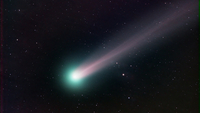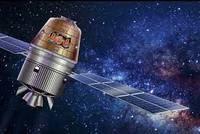
Astronomy Quiz # 1
Quiz
•
Science
•
9th - 12th Grade
•
Hard
Sean Policarpio
Used 5+ times
FREE Resource
11 questions
Show all answers
1.
MULTIPLE CHOICE QUESTION
3 mins • 1 pt
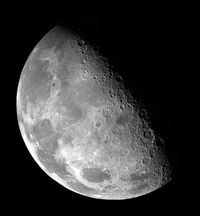
Natural satellites are always spherical due to the gravitational force they exert.
TRUE
FALSE
Answer explanation
Some natural satellites are captured asteroids; hence, they don't have the ability to shape themselves to become spherical satellites.
2.
MULTIPLE CHOICE QUESTION
3 mins • 1 pt
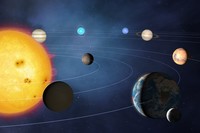
Which of the following statements describes the formation of the Solar System?
Dust particles are repelled as more mass forms at the central region.
Icy seeds contain water, which formed terrestrial planets such as Earth.
The temperature of the seeds inversely changes based on their distance.
Non-planetary bodies formed early in the Solar System.
Answer explanation
The farther the particles are from the center, the lower the temperatures they have.
3.
MULTIPLE CHOICE QUESTION
3 mins • 1 pt

Jupiter holds most of the mass in the Solar System.
TRUE
FALSE
Answer explanation
Despite being the largest planet, Jupiter does not have most of the Solar System's mass -- the Sun holds this title.
4.
MULTIPLE CHOICE QUESTION
3 mins • 1 pt
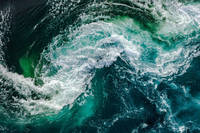
What type of tide represent extreme changes in water levels?
Neap
High
Ebb
Spring
Answer explanation
During Spring Tide, the gravitational force of the moon compounds with the gravitational force of the sun, creating the highest high tides and lowest low tides.
5.
MULTIPLE CHOICE QUESTION
3 mins • 1 pt
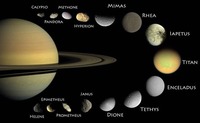
Gaseous planets have more moons than terrestrial planets to compensate for a lack of surface for landing expeditions.
FALSE
TRUE
Answer explanation
Gaseous planets have more moons than terrestrial planets because they exert stronger gravitational force -- this allows them to capture satellites and have their own prograde moons.
6.
MULTIPLE CHOICE QUESTION
3 mins • 1 pt
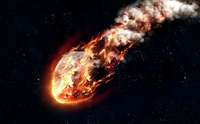
The following are correctly matched, except:
Meteor - Atmosphere
Shooting Star - Surface
Meteoroid - Space
Meteortite - Surface
Answer explanation
Shooting star is another name for meteors!
7.
MULTIPLE CHOICE QUESTION
3 mins • 1 pt
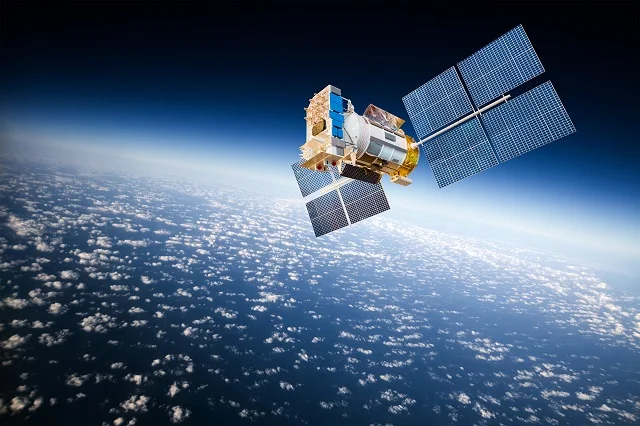
Artificial satellites can become natural satellites when they are captured by large objects such as planets.
FALSE
TRUE
Answer explanation
Artificial satellites are defined as small objects created artificially (by a person) and revolves around a large body.
Create a free account and access millions of resources
Similar Resources on Wayground

11 questions
Space - Science Trivia Night
Quiz
•
9th - 12th Grade

14 questions
Jupiter Quiz Review
Quiz
•
9th - 12th Grade

16 questions
Solar System and Formation of the Solar System
Quiz
•
9th - 12th Grade

15 questions
Solar System Review
Quiz
•
6th Grade - University

15 questions
Savvas Solar System
Quiz
•
6th Grade - University

15 questions
Solar Systems
Quiz
•
5th Grade - University

15 questions
Objects in Space
Quiz
•
5th Grade - University

15 questions
Minor Bodies in Our Solar System
Quiz
•
12th Grade
Popular Resources on Wayground

18 questions
Writing Launch Day 1
Lesson
•
3rd Grade

11 questions
Hallway & Bathroom Expectations
Quiz
•
6th - 8th Grade

11 questions
Standard Response Protocol
Quiz
•
6th - 8th Grade

40 questions
Algebra Review Topics
Quiz
•
9th - 12th Grade

4 questions
Exit Ticket 7/29
Quiz
•
8th Grade

10 questions
Lab Safety Procedures and Guidelines
Interactive video
•
6th - 10th Grade

19 questions
Handbook Overview
Lesson
•
9th - 12th Grade

20 questions
Subject-Verb Agreement
Quiz
•
9th Grade

